Conflict Zones
‘Who suffered the most?’: Fear and fatigue in Kashmir after ceasefire | India-Pakistan Tensions News
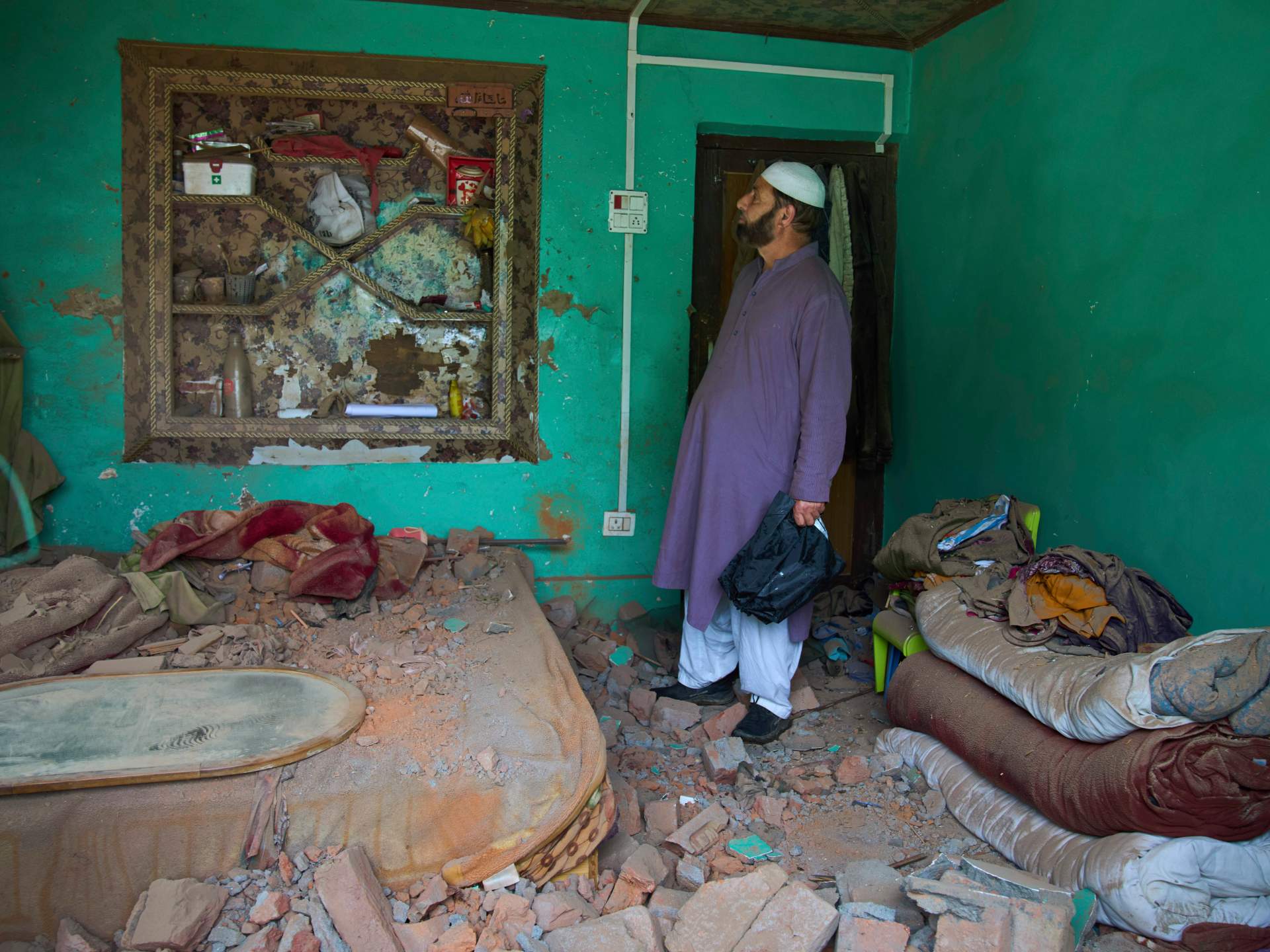
Srinagar, Indian-administered Kashmir — On Saturday morning at Fateh Kadal, a densely packed neighbourhood on the sloping embankment of the Jhelum river in Srinagar, Indian-administered Kashmir’s largest city, 62-year-old Hajira wrapped a cotton scarf with a brown paisley design around her shoulders.
With her face muscles tense and sweat beading across her upper lip, she sat on the cement floor of a government-run grains store.
“Can you make it quick?” she called to the person manning the store.
Hajira comes to the store every month to submit her biometric details, as required by the government to secure the release of her monthly quota of subsidised grains, which her family of four depends on.
But this time was different. The past few days have been unprecedented for residents of Indian-administered Kashmir. Drones hovered overhead, airports were shut down, explosions rang out, people were killed in cross-border fire and the region prepared for the possibility of an all-out war.
“He made me stand in the queue,” she said, flinching from knee pain, referring to the store operator. “But there’s uncertainty around. I just want my share of rice so I can quickly return. A war is coming.”
Then, on Saturday evening, Hajira breathed a sigh of relief. United States President Donald Trump announced that he had succeeded in mediating a ceasefire between India and Pakistan.
“I thank Allah for this,” Hajira said, smiling sheepishly. “Perhaps he understood that I didn’t have the means to endure the financial hardship that a war-like situation would have caused.”
On Sunday morning, Trump went a step further, saying in a post on his Truth Social platform that would try to work with India and Pakistan to resolve their longstanding dispute over Kashmir, a region both countries partly control, but where they each claim the part the other administers.
Political analyst Zafar Choudhary, based in the city of Jammu in southern Indian-administered Kashmir, told Al Jazeera that New Delhi would not be happy about Trump’s statement. India has long argued that Pakistan-sponsored “terrorism” is the primary reason for tensions between the nuclear-armed neighbours.
However, “Trump’s offer underlines the fact that Kashmir remains central to India-Pakistan confrontations”, Choudhary said.
And for Kashmiris, the hope stemming from the fragile pause in fighting between India and Pakistan, and Trump’s offer to mediate talks on Kashmir, is tempered by scepticism borne from a decades-long, desperate wait for peace.

‘Never been more frightened’
Hundreds of thousands of Kashmiris stood in the direct line of fire between India and Pakistan in recent days.
As the neighbouring nations launched missiles and drones at each other, communities in Indian-administered Kashmir near the de-facto border with Pakistan also witnessed cross-border shelling on a scale unseen in decades, triggering an exodus of people towards safer locations.
The shadow of conflict has stalked their lives for nearly four decades, since an armed rebellion first erupted against the Indian government in the late 1980s. Then, in 2019, the government scrapped Indian-administered Kashmir’s semi-autonomous status amid a huge security crackdown – thousands of people were imprisoned.
On April 22, a brutal attack by gunmen on tourists at Pahalgam left 26 civilians dead, shattering the normalcy critics had accused India of projecting in the disputed region.
Since then, in addition to a diplomatic tit-for-tat and missile exchanges with Pakistan, the Indian government has intensified its crackdown on Indian-administered Kashmir.
It has demolished the homes of rebels accused of links to the Pahalgam attack, raided other homes across the region and detained approximately 2,800 people, 90 of whom have been booked under the Public Safety Act, a draconian preventive detention law. The police also summoned many journalists and detained at least one for “promoting secessionist ideology”.
By Sunday, while a sense of jubilation swept through the region over the ceasefire, many people were still cautious, doubtful even, about whether the truce brokered by Trump would hold.
Just hours after both countries declared a cessation of hostilities, loud explosions rang out in major urban centres across Indian-administered Kashmir as a swarm of kamikaze drones from Pakistan raced across the airspace.
Many residents raced to the terraces of their apartments and homes to capture videos of the drones being brought down by India’s defence systems, a trail of bright red dots arcing across the night sky before exploding in midair.
As part of the emergency protocols, the authorities turned off the electricity supply. Fearing that the debris from drones would fall on them, residents ran for safety. The surge of drones through the night skies also touched off sirens, triggering a sense of dread.
“I don’t think I have ever been more frightened before,” said Hasnain Shabir, a 24-year-old business graduate from Srinagar. “The streets have been robbed of all their life. If the prelude to war looks like this, I don’t know what war will look like.”

A fragile ceasefire
Hours after the ceasefire was announced on Saturday, India accused Pakistan of violating the truce by shelling border regions. Residents across major towns in Kashmir were on their toes, once again, after drones reappeared in the skies.
One of the worst-affected places in Kashmir these days is Uri, a picturesque town of pear orchards and walnut groves close to India’s contested border with Pakistan.
The village is surrounded by majestic mountains through which the Jhelum river flows. It is the final frontier on the Indian-administered side before the hills pave the way to Pakistan-administered Kashmir.
Parts of Uri saw intense shelling, forcing the residents to leave their homes and look for safety. On May 8, officials told Al Jazeera that a woman, Nargis Bashir, was killed in her car as she and her family tried to flee the border region, like thousands of others, after flying shrapnel tore through the vehicle. Three of her family members were wounded.
Muhammad Naseer Khan, 60, a former army serviceman, was huddling in his room when Pakistani artillery fire hit a nearby military post, with metal shrapnel shards blasting through the walls of his house. “The blast has damaged one side of my home,” Khan said, wearing a traditional blue shirt and a tweed coat.
“I don’t know if this place is even liveable,” he said, his bright blue eyes betraying a sense of fear.
Despite the ceasefire, his two daughters and many others in his family who had left for a relative’s house, away from the disputed border, are sceptical about returning. “My children are refusing to return. They have no guarantee that guns won’t roar again,” he said.
Suleman Sheikh, a 28-year-old resident in Uri, recalled his childhood years when his grandfather would talk about the Bofors artillery gun stationed inside a military garrison in the nearby village of Mohra.
“He told us that the last time this gun had roared was in 1999, when India and Pakistan clashed on the icy peaks of Kargil. It is a conventional belief here that if this gun roared again, things are going to get too bad,” he said.
That’s what happened at 2am on May 8. As the Bofors gun in Mohra prepared to fire ammunition across the mountains into Pakistan, Sheikh felt the ground shaking beneath him. An hour and a half later, a shell fired from the other side hit an Indian paramilitary installation nearby, making a long hissing noise before striking with a thud.
Hours after Sheikh spoke to Al Jazeera for this report, another shell landed on his home. The rooms and the portico of his house collapsed, according to a video he shared with Al Jazeera.
He had refused to leave his home despite his family’s pleas to join them. “I was here to protect our livestock,” Sheikh said. “I didn’t want to leave them alone.”
Unlike the rest of the Kashmir Valley, where apple cultivation brings millions of dollars in income for the region, Uri is relatively poor. Villagers mostly work odd jobs for the Indian Army, which maintains large garrisons there, or farm walnuts and pears. Livestock rearing has turned into a popular vocation for many in the town.
“We have seen the firsthand experience of what war feels like. It is good that the ceasefire has taken place. But I don’t know if it will hold or not,” Sheikh said, his face downcast. “I pray that it does.”

‘How long must this continue?’
Back in Srinagar, residents are slowly returning to the rhythm of their daily lives. Schools and colleges continue to remain closed, and people are avoiding unnecessary travel.
The scenes of racing drone fleets in the skies and the accompanying blasts are seared into public memory. “Only in the evening will we come to know whether this ceasefire has held on,” said Muskaan Wani, a student of medicine at Government Medical College, Srinagar, said on Sunday.
It did, overnight, but the tension over whether it will last remains.
Political experts attribute the general scepticism about the ceasefire to the unresolved political issues in the region – a point that was echoed in Trump’s statement on Sunday, in which he referred to a possible “solution concerning Kashmir”.
“The problem to begin with is the political alienation [of Kashmiris],” said Noor Ahmad Baba, a former professor and head of the political science department at the University of Kashmir.
“People in Kashmir feel humiliated for what has happened to them in the last few years, and there haven’t been any significant efforts to win them over. When there’s humiliation, there is suspicion.”
Others in Indian-administered Kashmir expressed their anger at both countries for ruining their lives.
“I doubt that our feelings as Kashmiris even matter,” said Furqan, a software engineer in Srinagar who only gave his first name. “Two nuclear powers fought, caused damage and casualties at the borders, gave their respective nations a spectacle to watch, their goals were achieved, and then they stopped the war.
“But the question is, who suffered the most? It’s us. For the world, we are nothing but collateral damage.”
Furqan said his friends were sceptical about the ceasefire when the two countries resumed shelling on the evening of May 10.
“We all already were like, ‘It is not gonna last,’” he said, “And then we heard the explosions again.”
Muneeb Mehraj, a 26-year-old resident of Srinagar who studies management in the northern Indian state of Punjab, echoed Furqan.
“For others, the war may be over. A ceasefire has been declared. But once again, it’s Kashmiris who have paid the price – lives lost, homes destroyed, peace shattered,” he said. “How long must this cycle continue?”
“We are exhausted,” Mehraj continued. “We don’t want another temporary pause. We want a lasting, permanent solution.”
Conflict Zones
Gaza’s hospitals cannot provide food to recovering patients | Israel-Palestine conflict News
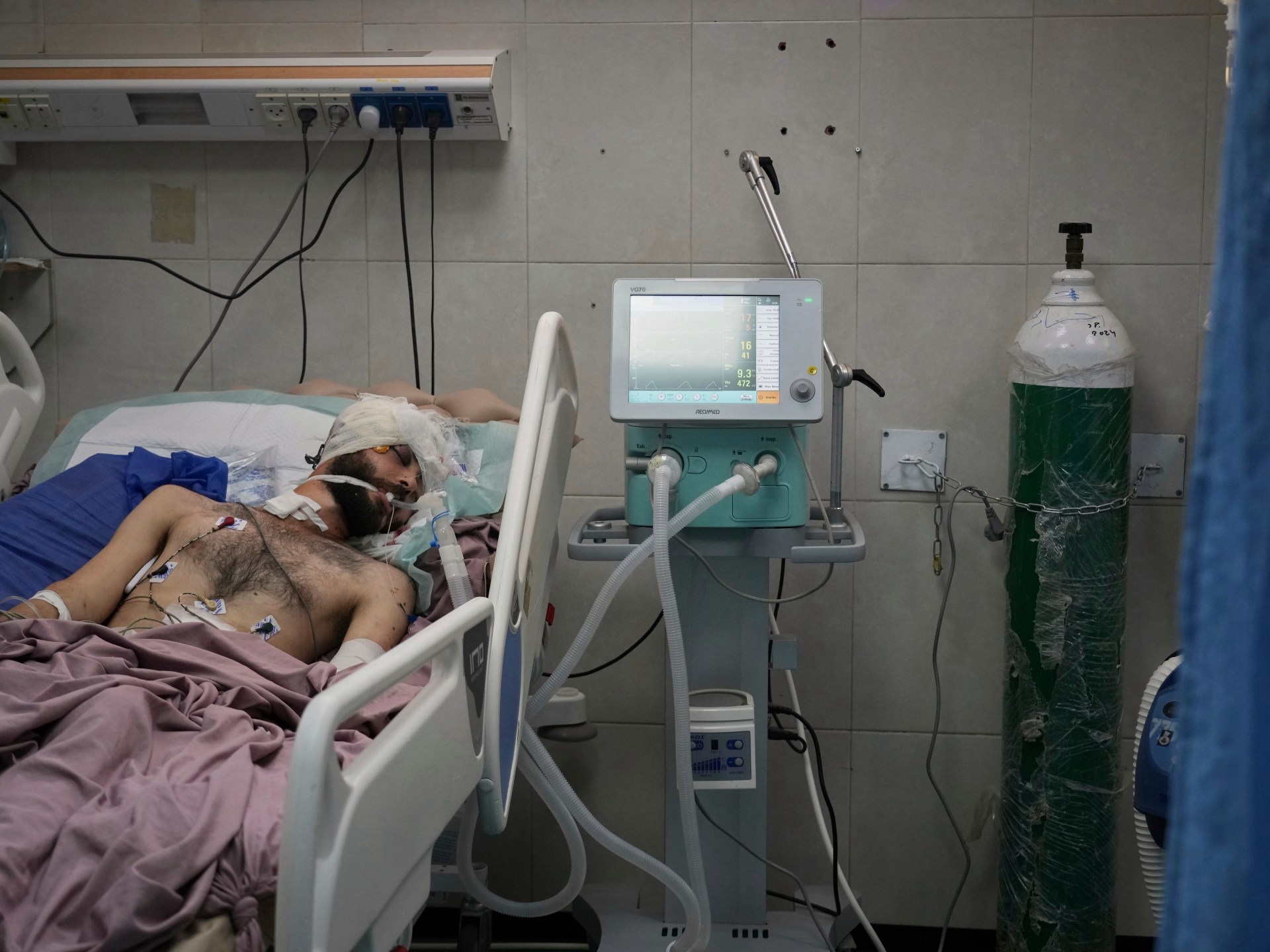
Hospital patients in Gaza are under increasing threat as Israel’s blockade on food and other supplies entering the enclave enters its third month.
Palestinians across Gaza are struggling to feed themselves, and with hospitals unable to provide food, families must bring whatever they can find for their loved ones.
“Most, if not all, wounded patients have lost weight, especially in the past two months,” said Dr Khaled Alserr, a general surgeon at Nasser Hospital in the southern city of Khan Younis.
Nutritional supplements for intensive care unit patients are lacking, he said. “Our hands are tied when it comes to making the best choice for patients. Choices are limited.”
Aid groups say that malnutrition is on the rise across Gaza.
Thousands of children have been found with acute malnutrition in the past month, but adults are also not receiving proper nutrients, according to the United Nations. It estimates that 16,000 pregnant women and new mothers this year face acute malnutrition.
Since Israel’s blockade began on March 2, food sources have been dwindling.
Aid groups have stopped food distribution. Bakeries have closed. Charity kitchens handing out bowls of pasta or lentils remain the last lifeline for most of the population, but they are rapidly closing for lack of supplies, according to the UN.
Markets are empty of almost everything except canned goods and small amounts of vegetables, and prices have been rising.
Local production of vegetables has plummeted because Israeli forces have damaged 80 percent of Gaza’s farmlands, the UN says, and much of the rest is inaccessible inside newly declared military zones.
Israel says it imposed the blockade and resumed its military campaign in March to pressure Hamas to release its remaining captives and disarm.
Israeli officials have asserted that enough food entered Gaza during a two-month ceasefire earlier this year. Rights groups have disputed that and called the blockade a “starvation tactic” and a potential war crime.
Now, Israel plans to control aid distribution in Gaza, using private contractors to distribute supplies.
The UN and other aid groups have rejected the idea, saying it could restrict who is eligible to give and receive aid and could force large numbers of Palestinians to move, which would violate international law.
Those under care at hospitals, and their families who scrounge to feed them, would face further challenges under Israel’s proposal. Moving to reach aid could be out of the question.
Israel’s war on Gaza has killed at least 52,829 Palestinians and wounded 119,554, according to Gaza’s Health Ministry. The enclave’s Government Media Office updated the death toll to more than 61,700, saying thousands of people missing under the rubble are presumed dead.
An estimated 1,139 people were killed in Israel during the Hamas-led attacks on 7 October 2023, and more than 200 were taken captive.
Conflict Zones
Do Israel’s attacks make a difference to Yemen’s Houthis? | Conflict News

Amid ferocious Israeli attacks on Yemen, ostensibly in response to Houthi attacks on Israel, surprising news from the United States seemed to shake matters briefly.
US President Donald Trump said on Tuesday that a ceasefire had been agreed between his country and the Houthis, claiming the Houthis had bent the knee and this was a victory for the US.
He also praised the Houthis for their bravery and resilience.
This meant the US would no longer be bombing Yemen, and the Houthis would stop firing at ships in the Red Sea in support of the Palestinians in Gaza.
There was no mention of Israel in Trump’s announcement – a sign, to many, of a possible chill between Trump and Israeli Prime Minister Benjamin Netanyahu.
The Houthis, for their part, made it clear that the deal does not extend to Israel and they would continue their attacks until Israel allowed aid into Gaza, ending the starvation it is imposing on the people there.
Israel left out?
Israel has been launching attacks on Yemen, claiming it wants to deter the Houthis, who took control of Sanaa in 2014 and already fought a years-long war against the internationally recognised Yemeni government.
Israel’s most recent attack, on Sunday, bore an eerie resemblance to how it has operated when bombing the trapped population of Gaza, issuing “warnings” to people in three Yemeni ports in Hodeidah governorate to flee, with less than an hour’s notice.
Whether this escalation is a reaction to the announced US ceasefire remains to be seen, but many analysts have spoken of a widening rift between Netanyahu and Trump.
Netanyahu has reportedly expressed his frustration with Trump’s Middle East policy in private conversations.
He has been publicly against the US administration’s talks with Iran, claiming there is no diplomatic way to resolve differences with Tehran, yet Iran and the US have continued their talks.
He went on to blame Iran for the Houthis’ attacks, claiming Israel’s attacks are a message to the “Houthis’ sponsors”.
Trump, for his part, has seemed unconcerned.
“It’s worth noting Trump didn’t say anything about [Houthi] attacks on Israel, which seem to be continuing amid this escalation,” Nicholas Brumfield, a Yemen analyst, told Al Jazeera.
“In [this] case, it’s a US drawdown because the Houthis haven’t been attacking international shipping,” Brumfield said. “They’ve been attacking Israel. The US has been doing its thing, and the Houthis have been targeting US ships.”
After Israeli attacks on Monday and Tuesday, which killed at least three people and wounded 35 others and damaged Hodeidah Port and Sanaa Airport, the Houthis promised retaliation.
The attacks “will not go unanswered”, the Houthi political bureau said in a statement.

That kind of statement is typical of the Houthis, who have managed to weather more than a decade of attacks by forces with far superior military capabilities.
Air strikes by the US and United Kingdom on Yemen in early 2024 were unable to stop the Houthis’ attacks on Red Sea traffic.
Years of air strikes by a Saudi-led coalition supporting Yemen’s internationally recognised government taught the Houthis to keep their military infrastructure agile, analysts told Al Jazeera.
A senior US government official, speaking on condition of anonymity, told Al Jazeera that recent US attacks on the Houthis have pushed leaders underground after the killing of some key military commanders.
However, unlike under US President Joe Biden’s administration, the attacks under Trump have been indiscriminate and have led to more civilian deaths. More than 250 people have been killed by US attacks on Yemen since mid-March, including at least 68 people at a centre housing detained African refugees and migrants in late April.
Experts told Al Jazeera that despite the increased ferocity of those attacks, the Houthis have not been deterred.
“The Houthis aren’t going to stop,” Brumfield said.
Israel still striking
The Houthis have made their stance clear vis-à-vis the agreement with the US and the continuation of attacks on Israel, which has also made clear that it plans to keep attacking.
“The stated aim is to deter [the Houthis] or deplete their military capabilities to the point that the Houthis cannot target Israel any more, but these are both very unrealistic goals,” Hannah Porter, an independent Yemen analyst, told Al Jazeera.
Israel already considers that it has diminished the capabilities of two of its biggest foes, Hezbollah in Lebanon and Hamas in Gaza, over the past 19 months.
But trying something like that on the Houthis would be a vastly different challenge, she said.
“Israel has probably not gathered the amount of intel on the Houthis that they have on Hamas or Hezbollah, so tracking and targeting leaders will be harder,” Porter said.
“More importantly, the geographic area is much larger in northern Yemen, meaning that there are far more potential targets.”
“The terrain is a factor, too,” she added. “Northern Yemen is very mountainous with plenty of places to hide people and weapons.”
For now, Israel and the Houthis seem intent on continuing their exchange of attacks. And the first to suffer will be the people of Yemen.
Israel struck numerous targets in recent days in Yemen, including Sanaa’s airport and the port in Hodeidah, which experts said is likely to exacerbate Yemen’s dire humanitarian situation.
Israel destroyed at least three civilian planes in the attacks.

Yemen is already suffering one of the world’s worst humanitarian crises. More than 18.2 million people require humanitarian assistance and protection services, according to the United Nations.
More than 17.1 million Yemenis suffer acute food shortages, and about five million are on the brink of famine.
While analysts said Israel’s attacks on ports will not be a “knockout blow”, they are among a matrix of factors that leave many Yemenis in an increasingly precarious position.
“The humanitarian situation will just get worse,” Raiman Al-Hamdani, a Yemen researcher with the international development company ARK, told Al Jazeera.
“Destroying the two main ports of northern Yemen, where the majority of the population lives, coupled with the FTO [“foreign terrorist organisation”] designation with cuts to the aid system around the world and the deteriorating economy … is a recipe for [unprecedented] humanitarian disaster.”
“[Israel’s attacks] are a continuation of its strategy. It’s out of spite, targets civil infrastructure and the policy of creating human suffering,” Al-Hamdani said.
Both sides seem unwilling to stop, however.
“I cannot see anything quite good coming out of this unless the war Israel is waging on Gaza comes to some form of truce,” Al-Hamdani said.
Conflict Zones
What can be learned from the latest conflict between India and Pakistan? | India-Pakistan Tensions

A tense ceasefire holds days after the most intense hostilities in decades.
Feelings of relief and hope are sweeping India and Pakistan.
The latest flare-up in hostilities that killed at least 60 people across the two countries has come to a dramatic halt after four days.
Nearly 30 countries including the United States are reported to have been involved in getting the ceasefire agreed.
The administration of US President Donald Trump, which announced the truce, has proposed a new round of talks at a neutral venue to try and end the bitter rivalry.
A dispute over divided Kashmir, India’s accusation that Pakistan is backing terrorist attacks inside its territory, and differences over the sharing of river water are all issues that have been festering for decades.
So are both sides at last ready to negotiate?
Presenter: Cyril Vanier
Guests:
Walter Ladwig – Senior lecturer in International Relations at King’s College London
Elijah Magnier – Military and political analyst
Shashank Joshi – Defence editor of The Economist newspaper
-

 Conflict Zones2 days ago
Conflict Zones2 days agoExplosions, violations reported after India and Pakistan agree ceasefire | Conflict News
-

 Europe2 days ago
Europe2 days agoRising waters and overtourism are killing Venice. Now the fight is on to save its soul
-
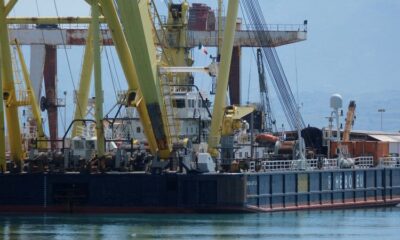
 Europe2 days ago
Europe2 days agoDiver dies in preliminary operations to recover tech tycoon’s sunken superyacht
-

 Asia2 days ago
Asia2 days agoThe US takes credit for India-Pakistan ceasefire, but it was pushing on an open door
-

 Middle East2 days ago
Middle East2 days agoIran’s FM visits Saudi Arabia, Qatar before nuclear talks with US in Oman | Politics News
-
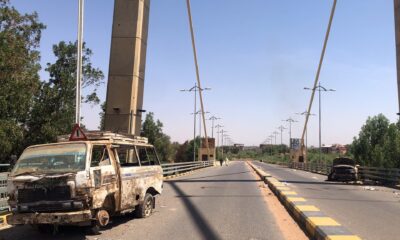
 Middle East2 days ago
Middle East2 days agoAt least 33 people killed in suspected RSF attacks in Sudan | Sudan war News
-
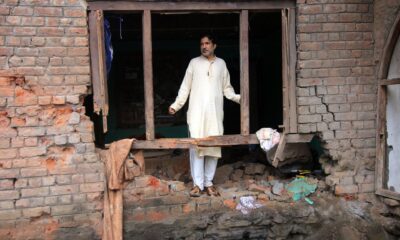
 Conflict Zones2 days ago
Conflict Zones2 days agoIndia and Pakistan agree ceasefire: What does it mean? | India-Pakistan Tensions News
-

 Europe2 days ago
Europe2 days agoUkraine ceasefire call aimed at forcing Putin to reveal his war goals to Trump




